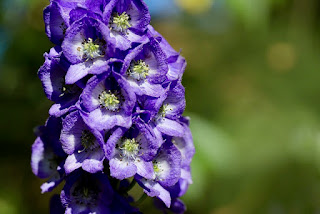World must beutiful dangerous flower
Oleander: It feels small, nice, colored to one of the most famous ornamental plants; on the other side, it feels like one of those poisonous plants to such an extent that the intake of a small amount of leaves or flowers would mean certain death to a person.
 |
| Oleander flower |
Angel's Trumpet Bush: Characterized by the inflorescence, white, yellow, and pinkish-pale in color, to the shape of a trumpet. It is in the leaves of this flower that the abundance in alkaloids reaches its peak from which hallucinations and paralysis ensue. If this goes to an extreme, then death has also followed.
 |
| Angel's Trumpet Bush |
Lily of the Valley: The dainty, bell-shaped blossoms of this pretty perennial give it a darling demeanor—but even a low dose of its toxin, which induces nausea, vomiting, and irregular heartbeats, is powerful enough to kill a child or pet.
 |
| Lily of the Valley |
Yew: This always appears much like an evergreen conifer, and indeed, the fruits are almost invariably too tempting; but this is likely what is meant by deceptive looks to their fullest extent: the bark, seeds, and leaves of yew are terribly very poisonous, and in very little time, can induce nausea, fits, abdominal pain, cardiac shock, and death.
 |
| Yew fruits |
Castor Oil Plant: Though the plant itself has a considerably higher chance of killing you than of healing you, it is the source of a great deal of home medicines. In fact, seeds of this specific kind of tree contain one of the strongest natural toxins on the planet. Cornell Medical College High school of Farming and Life Sciences is the original source.
 |
| Castor Oil Plant |
This cadaver Lilly is the Rafflesia arnoldii, claimed to be one of the rarest flowers in the world and thought to be critically endangered. It originated from the Southeastern Asian tropical rain forests. It has a horribly bad odor, which is reminiscent of decaying flesh, hence it's pollination process is aided by attraction of the corpus flies.
Aconitum Taigicola: You might recognize this dangerous bloom as one of the potion ingredients in Harry Potter, where it’s referred to by a more ominous name: wolf’s bane. If consumed in high concentrations, the pernicious purple perennial can cause paralysis and death.
 |
| Aconitum Taigicola |
Sanguinaria Canadensis: Bloodroot— The root of herb yields a red liquid, very toxic, and contact possibly causes itching, pain or scabbing due to tissue destruction.
 |
| Sanguinaria canadensis (bloodroot) |
Many of these beautiful flowers are also poisonous on eating or even by light touching.


.jpeg)

.jpeg)






0 Comments